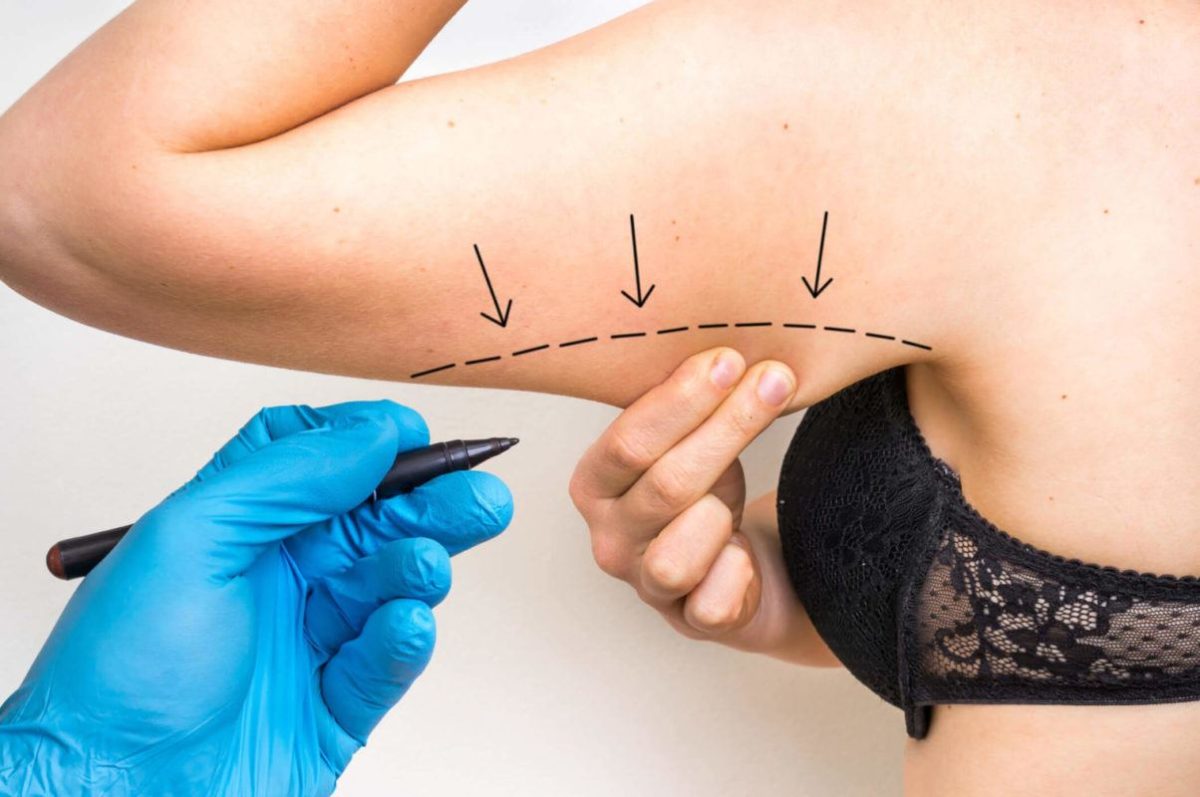Understanding Buffalo Hump Liposuction
Buffalo Hump
A buffalo hump is a fat deposit on the upper back, near the neck. Liposuction can effectively remove this. The procedure involves suctioning out excess fat, offering a more contoured back and neck line.
People opt for this surgery to eliminate the hump. It not only enhances their appearance but also improves posture.
Benefits
Choosing liposuction for buffalo hump removal comes with several advantages. It leads to better posture by reducing weight on the shoulders and neck. Patients often report feeling more comfortable in their clothes post-surgery.
The cosmetic improvement is significant, boosting self-esteem. Individuals enjoy a more youthful and streamlined silhouette.
Realistic Expectations
It’s crucial to have realistic expectations about liposuction results. They vary among individuals due to factors like skin elasticity and body shape.
Not everyone achieves the same level of contouring or fat removal. Consulting with a skilled surgeon helps set achievable goals. They assess your specific situation to predict outcomes accurately.
Preparing for Buffalo Hump Liposuction
Pre-Op Tests
Before undergoing liposuction to remove a buffalo hump, patients must complete several pre-operative tests. These ensure safety and readiness for the procedure. Blood tests are common to check for any underlying conditions that might complicate surgery. Imaging studies, like MRI or CT scans, help in understanding the fat deposits‘ extent.
Patients may also undergo cardiac evaluations if there are concerns about heart health. This comprehensive approach minimizes risks associated with removing fatty tissue from the neck and upper back area.
Lifestyle Adjustments
Making certain lifestyle changes is crucial before liposuction. Smokers are advised to quit as smoking can delay healing and increase the risk of complications. Adjusting medications is another important step, especially for those taking blood thinners or supplements that could affect bleeding.
A healthy diet and staying hydrated are recommended to enhance recovery post-surgery. These adjustments help reduce bruising and swelling, common side effects of removing excess fat through small skin incisions.
Recovery Support
Arranging post-surgery support is essential for a smooth recovery at home. Patients will need help around the house during the initial days when mobility might be limited due to discomfort and swelling. It’s also wise to prepare a comfortable recovery area with easy access to essentials.
Having someone available to drive you home after the procedure and assist with daily tasks can make a significant difference in your comfort levels and speed up recovery. Ensuring you have ample rest and follow all post-operative care instructions leads to better skin contraction and healing outcomes.
Eligibility for Buffalo Hump Liposuction
Good Candidates
Good candidates for this procedure must meet specific criteria. They should be in overall good health and have a buffalo hump mainly composed of fat tissue. It’s essential that the hump is not primarily due to muscle or other non-fatty tissues, as liposuction targets fat removal.
Patients also need a stable weight before undergoing the surgery. Significant weight fluctuations can affect the outcome, making it less predictable and potentially unsatisfactory.
Health Considerations
Individuals with certain health conditions may not be suitable for this procedure. These include serious heart problems, blood clotting disorders, or immune system issues. Such conditions can increase the risk of complications during or after surgery.
Moreover, those with unrealistic expectations about what liposuction can achieve are also not ideal candidates. It’s crucial to understand that while liposuction can significantly improve the appearance of a buffalo hump, it may not always result in perfection.
Detailed Procedure Overview
Initial Steps
The liposuction process for a buffalo hump begins with a comprehensive consultation. During this time, the surgeon reviews the individual’s medical history and discusses their specific situation. This ensures a safe procedure tailored to each person’s needs.
Surgeons then plan the procedure, considering the underlying cause of the excess fat in the upper back. They decide on the most effective method to address it.
Surgical Methods
Surgeons may choose from various techniques, such as tumescent liposuction or laser-assisted methods. Tumescent liposuction involves injecting a solution into the fatty area to liquefy fat cells before removal. Laser-assisted methods use heat to break down fat cells.
These techniques require expertise and precision. The choice depends on the patient’s body and desired outcome.
Procedure Day
On the day of surgery, individuals receive anesthesia for comfort. The duration of this surgical procedure typically spans several hours but can vary based on complexity and volume of fat removal.
This is often an outpatient service, allowing patients to go home the same day.

Recovery Process
Recovery varies by individual but generally involves rest and limited activity for at least a week. Full recovery and return to normal activities might take longer, depending on how one’s body heals.
Patients should follow their surgeon’s advice closely during this period to ensure optimal healing and results.
Recovery and Postoperative Care
Recovery Time
After the detailed procedure overview, understanding the recovery timeline becomes crucial. Most patients can resume normal activities within a few days post-surgery. However, complete healing and final results may take a few weeks to manifest. Surgeons often provide specific guidelines based on the surgical methods used and individual medical conditions.
Patients should expect some discomfort and swelling initially. These symptoms are part of the healing process and gradually diminish.
Pain Management
Managing postoperative discomfort is vital for a smooth recovery. Surgeons typically prescribe pain medication and recommend over-the-counter options for managing mild pain. Applying ice packs can also reduce swelling and provide comfort.
It’s essential to follow the surgeon’s advice closely to ensure safety and minimize side effects.
Incision Care
Care of the incision site plays a significant role in preventing infection and ensuring optimal healing. Surgeons might use small incisions for the cannula insertion during liposuction, minimizing scarring. These sites require regular cleaning with recommended solutions like chlorhexidine to promote safe healing.
Patients should avoid strenuous activities that could stress the treated area or disrupt the healing incisions.
Follow-Up Appointments
Regular follow-up appointments allow surgeons to monitor recovery progress, address any concerns, and manage potential complications early. These sessions are critical for assessing the effectiveness of treatment and ensuring patient satisfaction with the outcome.
Visualizing Results Before and After
Before Photos
Looking at before and after photos is crucial. It helps set realistic expectations for buffalo hump liposuction. Seeing these images gives a clear idea of the possible transformation.
Patients often find motivation in before photos. They showcase the severity of the buffalo hump and its impact on posture and appearance.
After Results
The after results bring hope and excitement. However, understanding the timeline to see the final results is important. The gradual reduction of swelling reveals the new contour over weeks or months.
It’s thrilling to see the change in one’s silhouette post-procedure. Yet, patience is key as the body heals and adapts to its new shape.
Longevity of Results
Maintaining the results requires effort. Lifestyle choices and weight maintenance play a big role in preserving your new contour. Weight gain can cause the buffalo hump to reappear, undermining the surgery’s success.
A balanced diet and regular exercise are essential. They ensure that the results last as long as possible, making the investment worthwhile.
Comprehensive Cost Breakdown
Surgeon’s Fees
The surgeon’s expertise significantly impacts the cost. Highly experienced surgeons may charge more due to their skills and successful outcomes. This fee encompasses pre-surgery consultation and the surgery itself.
Surgeons in high-demand areas often have higher fees. It reflects their expertise and the demand for their services.
Anesthesia Costs
Anesthesia is crucial for a pain-free experience. The cost varies depending on whether local or general anesthesia is used. General anesthesia, which puts you completely to sleep, typically costs more.
This fee is separate from the surgeon’s and pays for the anesthesiologist’s services.
Facility Fees
The location where your surgery takes place also affects the price. High-end facilities in metropolitan areas usually charge more. These fees cover the use of operating rooms, equipment, and staff support during the procedure.
Facilities with state-of-the-art technology might have higher charges but offer better safety and comfort.
Geographic Variation
Costs vary widely across different regions. Urban centers with a high cost of living generally see higher liposuction prices than rural areas. Researching local averages can help set realistic budget expectations.
Additional Expenses
Post-surgery garments are essential for recovery but add to the overall cost. Medications for pain management and infection prevention are other vital considerations that can increase expenses.
It’s important to factor these into your budget to avoid surprises.
Financing Options and Planning
Payment Plans
Clinics often offer financing options to make liposuction for buffalo hump more accessible. These plans can spread the cost over months or even years. It’s crucial to understand the terms and interest rates before committing.
Contacting several clinics allows comparison of their financing solutions. This approach ensures you find a plan that suits your budget without compromising on quality.
Insurance Coverage
Most insurance companies view buffalo hump removal as cosmetic. Hence, they rarely cover it. However, if this condition causes physical discomfort or health issues, there might be exceptions.
Consult with your insurance provider to explore any possible coverage. They may require documentation proving the necessity of the procedure beyond improving appearance.
Savings Strategy
Starting a savings plan is wise for elective surgeries like this. Allocate a portion of your income each month towards the procedure. This method avoids financial strain and debt accumulation.
Consider alternatives like personal loans or borrowing from retirement funds only as a last resort due to potential risks and long-term impacts on financial health.
Closing Thoughts
Buffalo hump liposuction offers a transformative solution for those struggling with excess fat in this hard-to-target area. By understanding the procedure, preparing adequately, and knowing what to expect during recovery, you’re setting yourself up for success. The comprehensive cost breakdown and financing options we’ve discussed ensure that you can plan your journey with financial confidence. Remember, visualizing your before and after can serve as a powerful motivator throughout this process.
Choosing the right clinic and specialist is crucial. Look for someone who not only has the expertise but also understands your needs and expectations. Your journey to a more confident self starts with taking that first step. Reach out to a trusted professional today and begin discussing your options. Your transformation is closer than you think.
Frequently Asked Questions
What is Buffalo Hump Liposuction?
Buffalo Hump Liposuction is a surgical procedure aimed at removing excess fat deposits located on the upper back, near the neck. This technique helps in contouring the area for a more aesthetically pleasing appearance.
Who is eligible for Buffalo Hump Liposuction?
Individuals with a significant accumulation of fat in the upper back and neck area, who are in good health and have realistic expectations about the outcomes, are typically considered eligible for this procedure.
How do I prepare for Buffalo Hump Liposuction?
Preparation involves consultations with your surgeon to discuss your goals and medical history, undergoing certain medical tests if required, and following pre-operative instructions like avoiding smoking and certain medications.
What does the Buffalo Hump Liposuction procedure entail?
The procedure involves making small incisions in the target area, through which a cannula is inserted to break up and suction out fat cells. It’s performed under anesthesia to ensure patient comfort.
What can I expect during recovery from Buffalo Hump Liposuction?
Recovery includes wearing compression garments, managing pain with prescribed medication, and gradually resuming light activities. Follow-up visits will monitor healing progress. Full recovery varies but generally takes a few weeks.
How much does Buffalo Hump Liposuction cost?
The comprehensive cost breakdown includes surgeon fees, anesthesia fees, facility costs, and aftercare expenses. Prices vary widely based on location, surgeon’s experience, and specific case complexity but generally range from several thousand dollars.
Are there financing options available for Buffalo Hump Liposuction?
Yes, many clinics offer financing plans or accept healthcare credit cards to help patients manage the cost of their liposuction procedure over time. Discussing these options with your provider can help plan your surgery without financial strain.













